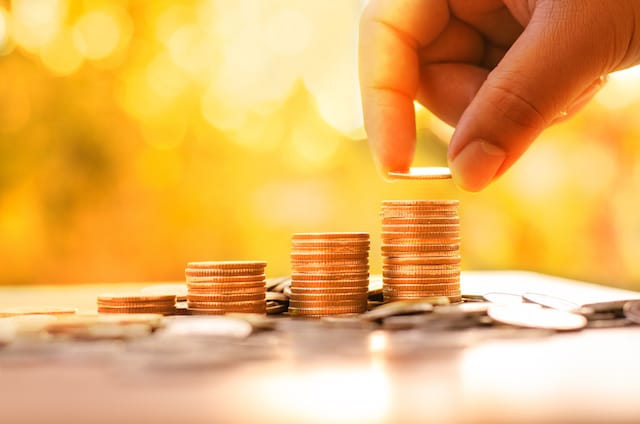This Is Why It’s So Crucial to Have Short-Term AND Long-Term Savings

You hear a lot about saving for retirement and having an emergency fund. What you don’t hear as much about is saving for things in between, like a car, replacing broken appliances or supplementing your income if you become unable to work.
There are things you already know you need to save for, and others that you’ll wish you’d been saving for when it’s too late.
If you want to avoid taking out payday loans, personal loans or going into credit card debt, you need short-term and long-term savings.
Short-Term vs. Long-Term Savings
For the purposes of this article, a short-term savings account is for money that will only stay in the account for a short time, and a long-term savings account is for money that will sit for a long time.
Still with me?
The definitions of long and short are relative, but short-term savings is typically money you’ll spend six months to three years out, and long-term savings is usually money you won’t touch for more than three years.
You can (and should) include saving for both long-term and short-term expenses every month in your budget. You never know when you’ll need your savings, and having money set aside can determine whether a situation is a crisis or just an inconvenience.
A Guide to Your Short-Term Savings Account
This account is where you sink funds for things like vacations, biannual auto insurance payments and holiday gifts. It can include money for goals like a buying a new laptop or a down payment on a house. It’s also for occasional unplanned expenses like repairs, replacements or low-cost medical emergencies and procedures.
A short-term savings account should be easily accessible. That means you should be able to withdraw cash from it or instantly transfer it to your checking account online.
You can estimate how much some things, like vacations and gifts, will cost so you’ll know exactly how much to save. In case of emergencies, it’s recommended that you have three months of expenses saved.
You can use the savings component of your checking account, but I find the more you see the money, the easier it is to spend it. To limit that temptation — and earn a little interest — you can put it in a high-yield savings account.
High-yield savings accounts can return up to 2%, which isn’t much, but it’s better than the 0.06% most banks give, and your money will still be easy to access.
How to Use Your Long-Term Savings Account
Long-term goals can include saving for a car, home repairs or retirement goals that require savings beyond tax-sheltered account limits. It can also include your emergency fund for large medical bills, expensive procedures or savings in case of a job loss.
Like short-term expenses, some long-term expenses can be budgeted for and some can’t. You’ll want to have three months of your regular expenses saved in this account, too, in addition to whatever other goals you’re saving for.
You actually don’t need to have a second account for long-term savings, but if you want to maximize your savings, you can keep this fund in a taxable investment account.
This is just a regular ol’ investment account, minus the tax benefits of 401(k)s and IRAs. What this account lacks in tax benefits, it makes up for in flexibility. You can open one with any brokerage company and withdraw from it at any age, for any purpose, with no penalties.
The reason it’s a good place for your long-term savings: You’ll be able to access the money within three days, which makes it a little hard to “accidentally” spend, and it earns whatever your investments earn. (Stocks produce an average real return around 6.8% annually, although any investment has risks.)
Companies like Vanguard, Fidelity and Schwab offer taxable accounts you can save in. In this type of account, you’ll want to withdraw as infrequently as possible so that interest can compound and hopefully make you more money.
That said, if you expect to need the money anytime soon, save it in your short-term savings account.
If you’re concerned about losing money, consider a certificate of deposit, or CD. Like checking accounts, CDs are insured by the FDIC. Interest rates are typically higher than what you’d earn from a savings accounts, but lower than what you’d earn from investments. The drawback is you typically have to stay vested in the CD for anywhere from three months to five years before you can touch your money.
And if saving for your kid’s college is one of your long-term savings goals, look into a 529 college savings plan. These plans allow you to choose investments for your child’s future tuition, and contributions are exempt from federal income tax.
How to Prioritize Your Short- vs. Long-Term Savings
Ideally, you’d add to your retirement AND both your long- and short-term savings accounts every month, but that’s not possible for everyone.
A simple emergency fund of at least three months’ worth of your bare minimum expenses is where you need to start. Then you can start saving for the rest of your goals and building out your emergency fund to six months of expenses.
Jen Smith is a staff writer at The Penny Hoarder. She gives money saving and debt payoff tips on Instagram at @savingwithspunk.


















